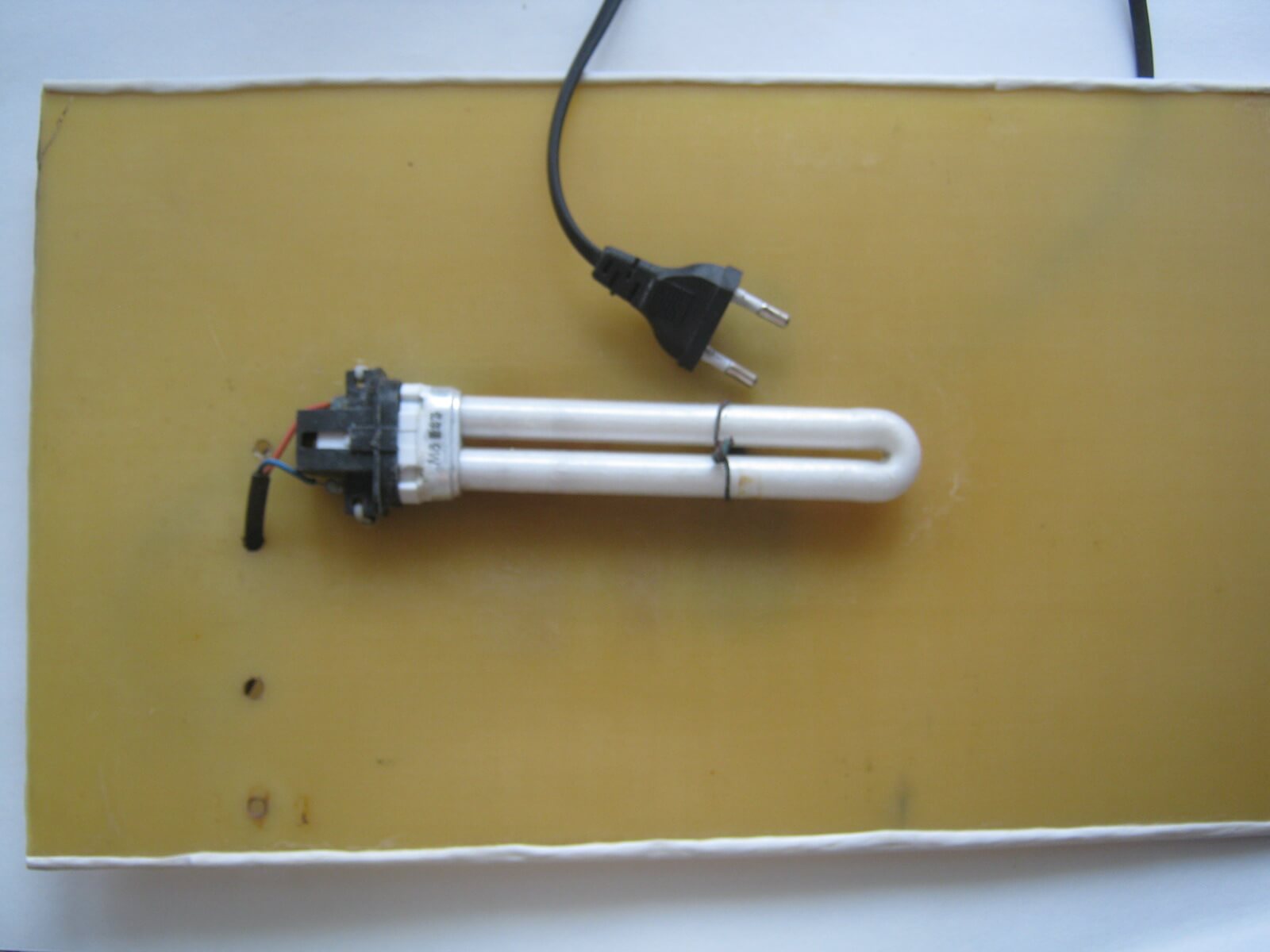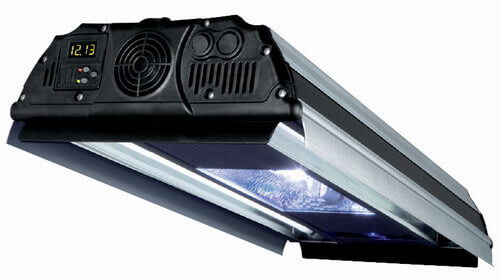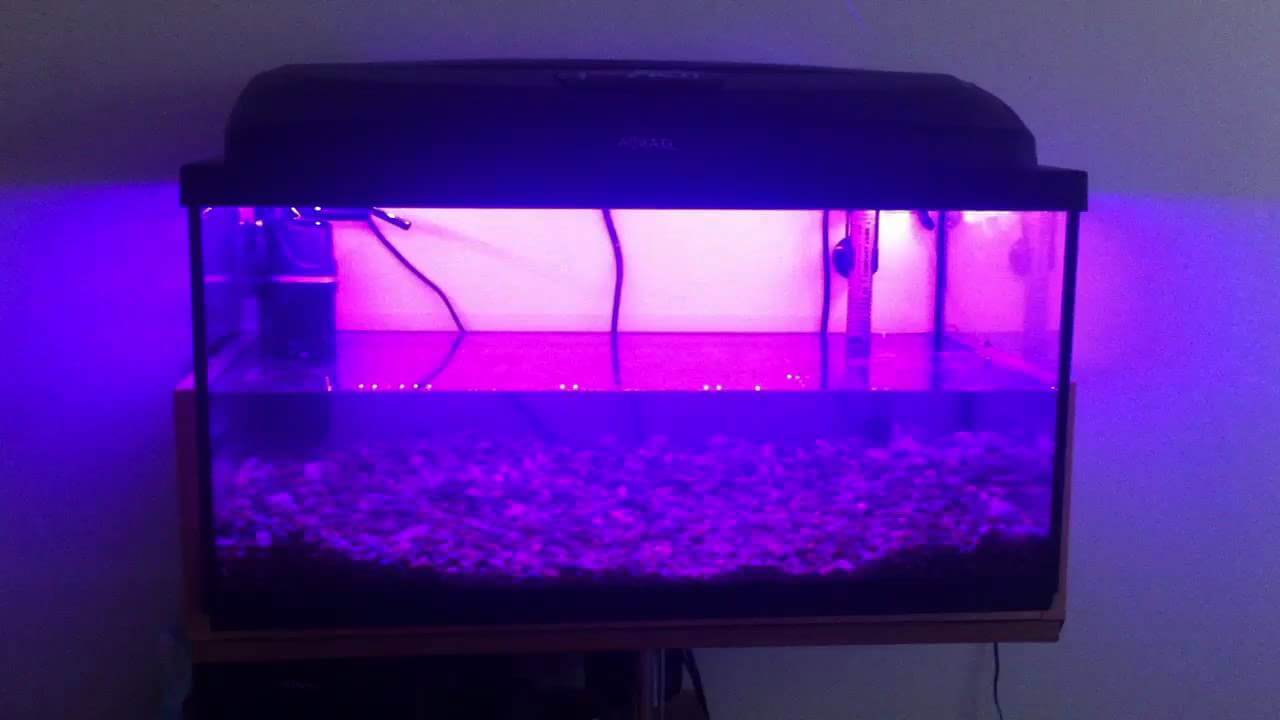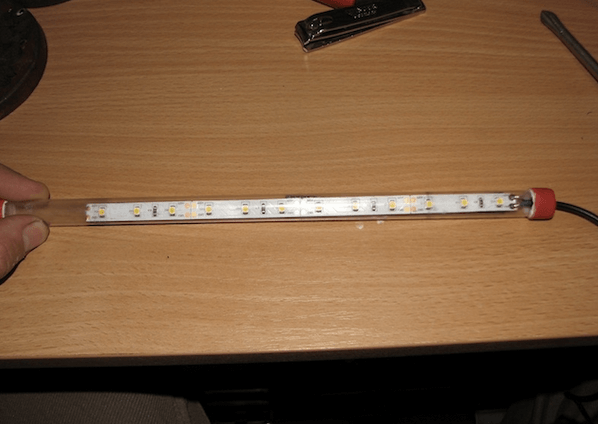How to make LED aquarium lighting?
Today, there are many options for how to make the lighting of the aquarium with your own hands. There are no problems when connecting bulbs, it is much more difficult to choose the right power and type of lamps, as well as choose a suitable location for light sources. Next for site readersElecroexpert Detailed instructions will be provided on how to make the backlight in your home aquarium yourself.
What difficulties may arise?
 In fact, there are not many factors that can affect lighting in an aquarium. Among the most important should be highlighted:
In fact, there are not many factors that can affect lighting in an aquarium. Among the most important should be highlighted:
- Over time, any light bulbs lose their light output, so you need to replace them in time. For example, LEDs degrade over time, so after 3-5 years it is already advisable to replace them. At the same time fluorescent tubes luminous flux decreases after six months of operation.
- When passing through water, light is scattered and absorbed by plants on their way to the bottom. For example, at the bottom of a 50-cm aquarium, the intensity of the light flux will decrease by more than 4 times. The same situation with protective glass, which can be installed on fixtures - when passing through the glass, the lighting loses its intensity.
- Incandescent lamps and metal halide light sources emit a large amount of heat, which in turn negatively affects flora and fauna. If you decide to choose powerful bulbs for lighting a deep aquarium, be sure to consider a heat removal system.
- It is impossible to recommend power and color spectrum that is suitable for your individual conditions with 100% accuracy. Each type of plant and fish needs its own specific characteristics of light sources, so below we will provide only general tips on how to properly make lighting in the aquarium with your own hands.
As you can see, there are difficulties in organizing the backlight, but all of them can be avoided if you approach the selection of lamps according to their characteristics correctly. We will talk about this further.
Lamp Selection Technology
To make an aquarium lighting at home, you must first correctly select the bulbs according to power, type and luminous flux. Consider the features of each of the characteristics of household lamps.
Type
The first thing you should choose is the type of light source. Today, luminescent, metal halide and LED lamp. Incandescent bulbs and halogen products are already a thing of the past, as heat up very much, have a short service life and also low efficiency. Consider the most popular of the devices:
- Luminescent (energy-saving). Economy lamps consume 5 times less electricity than simple light sources.They can be linear (LL), the representatives of which are products T4, T5 and T8 or compact (CFL). The first option is used more often, especially the T5 model, which, despite its high price, has high light output and a long service life (over 5 years). As for CFLs, they are recommended for use in lighting small aquariums up to 70 liters in volume. If you buy powerful CFLs, you will need to take care of a high-quality cooling system, as products emit a large amount of heat.


- Metal halide. They have good luminous flux and high power, so they are most often used to illuminate large deep aquariums in the house. Of the disadvantages is a short service life.

- LEDs Modern light sources for which the future. Today, a variety of diodes knows no limits. There are LED strips, and spotlights, and LED lamps, and even diode bulbs. They have the lowest power consumption, high light output and long service life. The disadvantage is the high price, although the purchase “beats” its price quickly due to significant energy savings.

LED aquarium lighting is the most modern and most recently used. A few more advantages of such products - they do not heat up too much, can work from a safe voltage (12 Volts) and also have high strength properties (the case is difficult to break).
Of all these options, we recommend that you choose either LEDs or fluorescent light sources for lighting, which have many positive reviews from owners of home aquariums.
You can learn a lot of useful things in this video:
By power
Today, there is a wide range of household lamps, ranging in power from 5 watts to hundreds. To correctly select this technical characteristic, rely on the following recommendations (with respect to the most popular ones - energy-saving lamps):
- for moderate lighting of the aquarium, it is enough to calculate 0.2 - 0.3 watts per liter;
- to make a bright backlight, the power should be 0.5 - 0.8 W / l;
- if there are a lot of plants and fish in the tank, it is better to calculate the power from 0.8 to 1 W / liter.
This calculation is generally accepted, but relying only on it is not worth it. It is better to take into account a more important characteristic - light output.
Light output
It is most correct to calculate the lighting of an aquarium by light output. For a standard tank height (50 cm), a luminous flux of approximately 30-50 lumens per liter must be calculated. Total, for the most popular volumes of aquariums, choose the following total light output depending on the dimensions:
- 25 l: from 750 to 1500 Lm;
- 60 l: from 1800 to 3000 Lm;
- 70 l: from 2100 to 3500 lm;
- 100 l: from 3000 to 5000 Lm;
- 120 l: from 3600 to 6000 Lm;
- 140 l: from 4200 to 7000 lm;
- 200 l: from 6,000 to 10,000 lm;
- 300 l: from 9000 to 15000 lm.
As you know, to illuminate a large deep aquarium, you will need to pick up powerful lamps with high light output. In this regard, the housekeeper is, of course, in a winning position, because consume less electricity when emitting the same luminous flux as the alternative options, as can be seen in the table:
You also need to correctly select the bulbs according to the color spectrum. There is a theory that it is best for flora to buy light sources that emit yellow and red so that the plants grow well. However, this point is quite controversial and most experts recommend installing several different lamps at the same time. On the design side Colour temperature may affect the backlight as follows:
In addition, we recommend that you also watch a video that details the importance of proper lighting of the aquarium:
Choose a place to install fixtures
When you decide on the required power and type of lamps, you will need to correctly create a diagram on which the installation locations of all the lamps will be marked. It’s already up to you how to place them inside the tank: in front under the lid or make side lighting for the aquarium by fixing the lamps on the sides of the lid. Colored lamps are also recommended to be installed in front in order to organize the overflow of light on plants and fish.
Above the open aquarium you can hang a fluorescent lamp from above, which will brightly illuminate all the flora and fauna under water. If the aquarium is without plants, you can connect rgb led strip, which will make the original color backlight, as shown in the photo. A single-color diode tape is also often used, but its brightness may not be enough for high-quality high-quality lighting. Such lighting fixtures are best secured around the perimeter for additional decorative illumination of water.
Proper connection of homemade backlight
Well, here we come to the main question of the article - how to make the lighting of the aquarium with our own hands. Consider a simple instruction for connecting a home-made LED strip, which will create a backlight under water.
First of all, we prepare all the necessary materials. In our case, this is an LED strip of 12 diodes, a plastic bulb of suitable length, a 220/12 Volt power supply, a soldering iron, silicone and an awl. Since there is a male connector in our power supply unit, you need to additionally buy a 12-volt female mother connector for connecting the tape itself. In addition, a piece of foam rubber and a two-wire wire for connecting the tape are useful. Having collected all the materials, we get down to business.
Using an awl, punch a small hole in the lid in order to pull the wire, as shown in the photo.
To the tape you need to solder the wire, which on the other hand will be connected to the "mother" with clamping screws. When you do this, you need to glue the foam pieces in three places on the back of the LED strip so that the material does not hang in the flask. In our case, we used noise insulation from the car, because no foam was found at hand.
When you do this, you need to glue the foam pieces in three places on the back of the LED strip so that the material does not hang in the flask. In our case, we used noise insulation from the car, because no foam was found at hand.
Next, the homemade product needs to be placed in a flask and all joints are carefully sealed to prevent water from getting inside. The advantage of such a bulb is that if it is necessary to repair the lighting in the aquarium (in particular the tape itself), it will be possible to get it out of the water without problems, unwind and replace it. One more idea moisture proof LED strip we provided in a separate article.
In the end, the tape connects to the network and is checked for operability. As you can see, making LED lighting in the aquarium with your own hands is not so difficult, the main thing is to want to!
We recommend that you connect the luminaire not directly to a wall outlet, but through a timer outlet. In this case, you can program a specific time for turning on and off the lamps so that they do not work in bright natural light. Usually daylight hours for plants should vary from 11 to 14 hours a day, so you will need to calculate the time and set the setting on the outlet. Such an idea will make automatic lighting of the aquarium. Another important point - do not buy Chinese LEDs, as they quickly fail during operation.
Another interesting idea for creating a home-made backlight system:
That's all I wanted to tell you about how to make the lighting of the aquarium with your own hands and which lamp options are better for various home conditions. We hope that the information was interesting and useful for you!
Also read:










